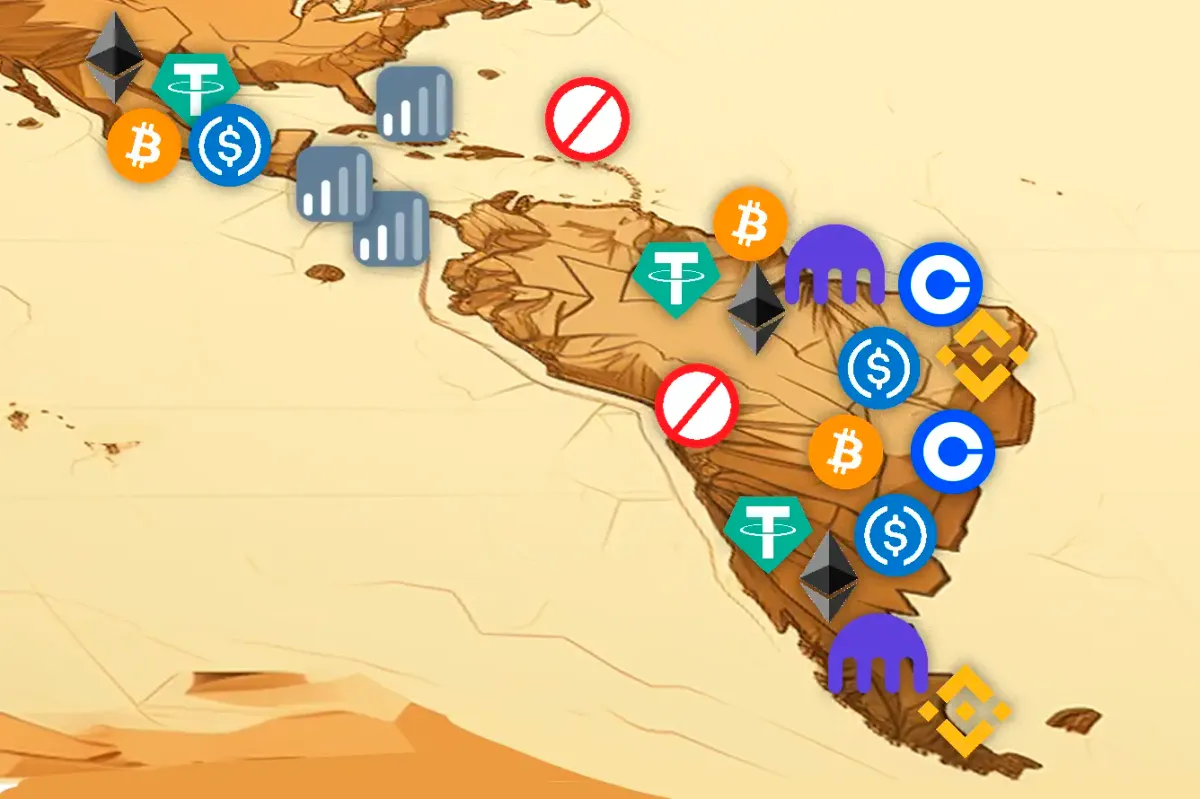
Latin America is a region of crypto contrasts, a new Chainalysis report shows.
The vast territory boasts strong grassroots adoption of cryptocurrencies despite the economies in the region generally being some of the smallest in the world. In El Salvador, Bitcoin was made legal tender in 2021, but neighbouring countries Bolivia and the Dominican Republic have restricted the use of crypto assets within their borders. Brazilians and Mexicans prefer speculating on altcoins, while Colombians and Venezuelans prefer to safeguard the value of their savings from hyperinflation through stablecoins.
The financial, economic and political dynamics of the countries within the region create singular relationships to cryptocurrency, from adoption levels to regulations, types of assets held, and exchanges used.
In the region’s largest economies - Brazil, Mexico, and Argentina - digital assets have higher adoption levels than in most other countries worldwide. For different reasons, crypto has become an important part of the day-to-day workings of governments, companies and individuals.
According to the report by the on-chain data analysis firm, the proactive stance taken by the Brazilian government and the private sector towards crypto put the country “more in line with wealthier regions that were earlier to adopt crypto, such as North America and Western Europe, more so than its regional neighbors.”
As a neighbor to the U.S., Mexico is the second-biggest receiver of remittances in the world, and the strength of the crypto ecosystem is maintained by nationals living abroad. In 2022 alone, Mexican exchange Bitso processed over $3.3 billion in crypto remittances.
While these countries make the most of crypto, some smaller regional peers have low adoption levels. Cuba, Guatemala, and Honduras, along with several other neighbors, are at the bottom of this year's global crypto adoption index.
Persistent high inflation makes Argentina and Venezuela fertile ground for cryptocurrency use. However, the need for protection against rising living costs creates a preference for stablecoins over more speculative digital assets.
Despite the support in maintaining income value, Argentinian banks are forbidden to trade digital assets or offer crypto to clients. This is an identical legal scenario to Bolivia but a huge contrast with El Salvador, where the government has used every tool at its disposal to incentivize the adoption of Bitcoin since it became legal tender in 2021.
There is one thing in common across all these territories - a preference for centralized exchanges (CEXs). In Latin America, CEXs are used for 63.8% of transactions compared with 48% in the rest of the world.
Nonetheless, divergences can still be observed, with Venezuela using CEXs 98% of the time and Mexico just 46%.
Homogeneity would be impossible to achieve in this immense continent, encapsulated between three oceans, facing Antarctica at its southern tip, and bordering the most powerful nation on earth in the north.
Yet, as a region often seen as a whole due to the common culture, politics, and the economic past of the countries that are part of it, one wonders if the crypto scene will continue being as disparate as it is now.

